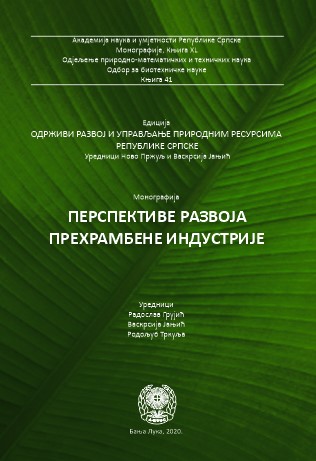Procedure for approval and methods of control of the presence of genetically modified organisms in food and feed
DOI:
https://doi.org/10.7251/EORU2002619TKeywords:
GMO, Foods, Methods of controlAbstract
Genetically modified organism (GMO) means an organism, with the exception of human beings, in which the genetic material has been altered in a way that does not occur naturally by mating and/or natural recombination. In order to be able to grow or put on the market different GM plant varieties or hybrids anywhere in the world as food or feedstuff, they must pass an approval process (authorization or registration). However, submitter for the approval process to place on the market food and feedstuff which contains and/or consists of or originating from GMOs is obliged to produce the so-called "risk assessment". The "risk assessments" includes a series of analyzes in order to do an evaluation of the health and ecological acceptability of each individual varieties or hybrids of GM plants, as well as to prepare a plan for continuous monitoring of the potential harmful effects of these GMOs on the environment and human health after its release. Furthermore, for the successful establishment of a GMO surveillance system it is very important to perform regular official inspections of food and feedstuff products to determine the presence of GMOs which are carried out using different methods, including detection of GMOs based on the presence of a new trait (phenotype), GMO analysis based on specific protein presence and GMO detection based on the DNA analysis. In the paper it is stated in detail the general principles and methodology for developing risk assessment and post-market surveillance of food and feedstuff containing and/or consisting of or derived from GMOs, as well as the most significant methods for detecting the presence of GMOs in food and feedstuff.
